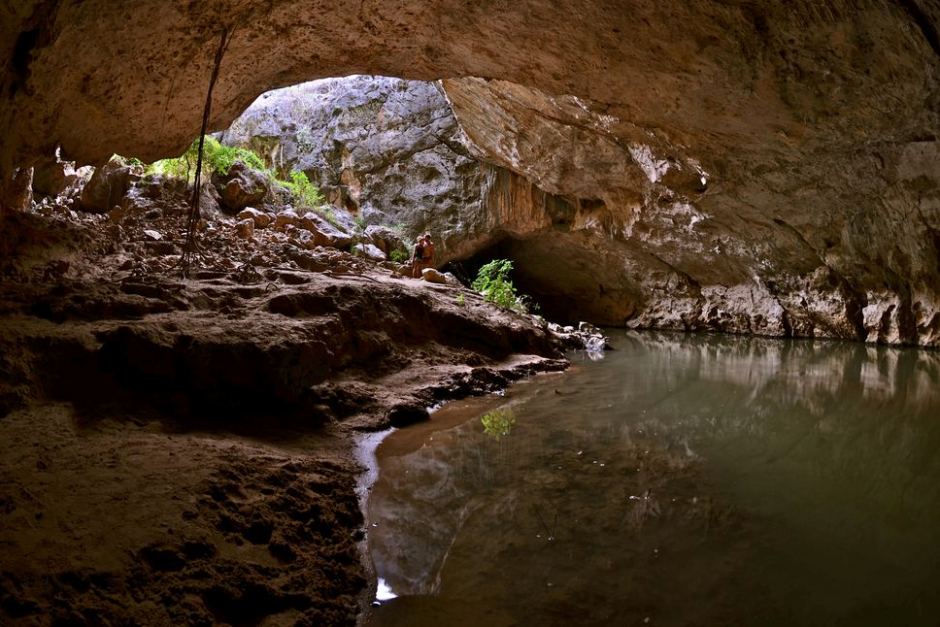|
Located 38km south east of Windjana Gorge and 115 kilometres west of Fitzroy Crossing, the creek has cut a
750 metre tunnel through the surrounding rock. If you wish to explore the tunnel take several torches as it is pitch black inside. This is believed to be W.A.'s oldest cave system.
The tunnel is up to 12 metres high and 15 metres wide.
Looking at the peaceful setting today it may be difficult to believe that this was the centre of conflict and a bloody struggle between the European settlers and the Bunumba
tribe led by Jandamarra.
There are many Aboriginal cave paintings near the entrances to the cave system.
Several different species of bat are known to inhabit the cave system including Australia's only carnivorous bat, the Ghost Bat. Other bats found here include the
Western Cave Bat, the common Bentwing bat, the Little Red Fruit Bat, the Yellow-lipped Bat, found only in the Kimberley and the Orange leaf-nose bat.
Freshwater Crocodiles are sometimes found in the pools where they feed on small fish, cherabun (a crustacean), frogs and insects.
Rainbow fish, bony bream, spangled perch and fork-tailed catfish can also be found in the pools.
Birdlife in the area includes the Black Bittern, Nankeen Night Heron, Nankeen Kestrels and many other bird species.
Tunnel Creek is located in the Napier Range which is the remains of a Devonian reef composed of limestone.
The limestone reef is composed of calcium carbonate, that is easily dissolved by rainwater seeping down from the surface. Over thousands of years, water flowing through
cracks, dissolves the limestone and opens it out to form caves. Caves have formed wherever the reef is exposed to the Earth's surface.
This process dates back at least 250 million years but the present cave system is a mere 20 million years old.
Tunnel Creek follows a significant fault in the limestone. A river valley on top of the range was formed when the climate was much more wet and the water table was higher.
Erosion has exposed the reef and preserved the original river course.
Water only flows through the cave during the wet season when there is prolonged heavy rain. In the dry season, water drips from the roof of the caves onto the floor
and this forms stalactites, stalagmites and flow-stones.
WARNING: The cave may flood during rains so if it is likely to rain stay out.
NPW Website for more information
Best time to visit:
|
Jan
|
Feb
|
Mar
|
Apr
|
May
|
Jun
|
Jul
|
Aug
|
Sep
|
Oct
|
Nov
|
Dec
|
|







